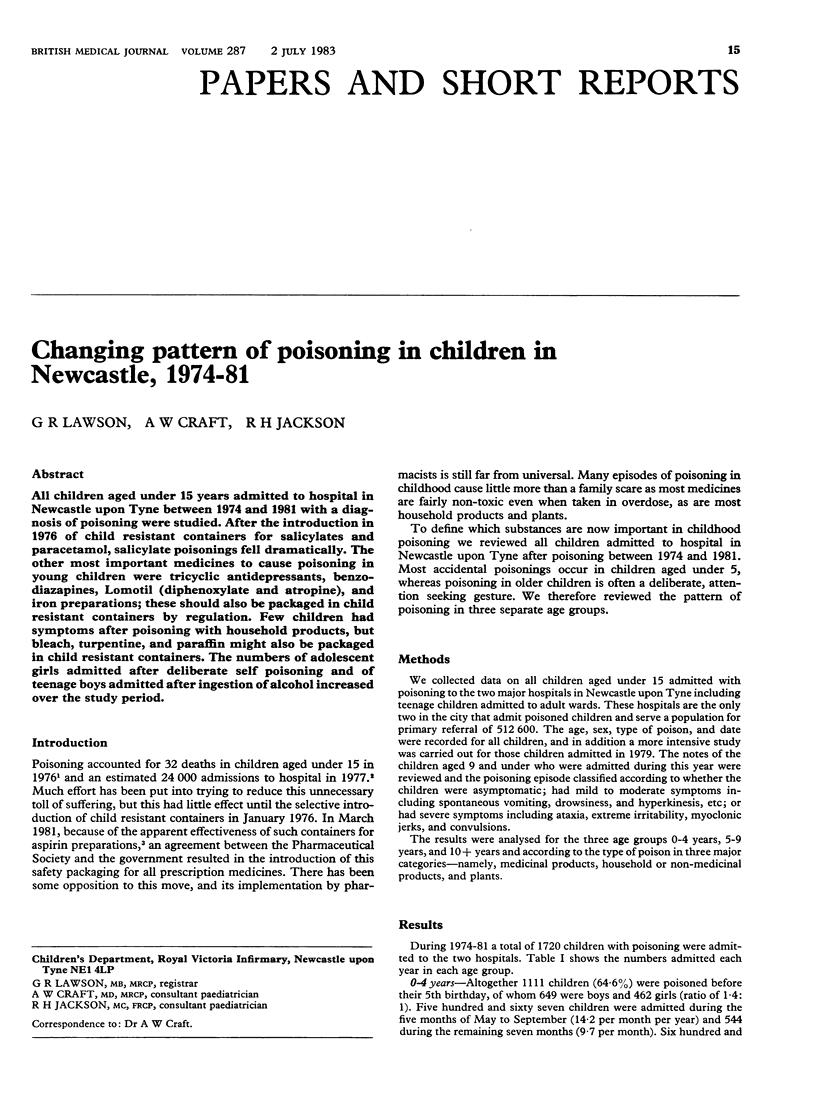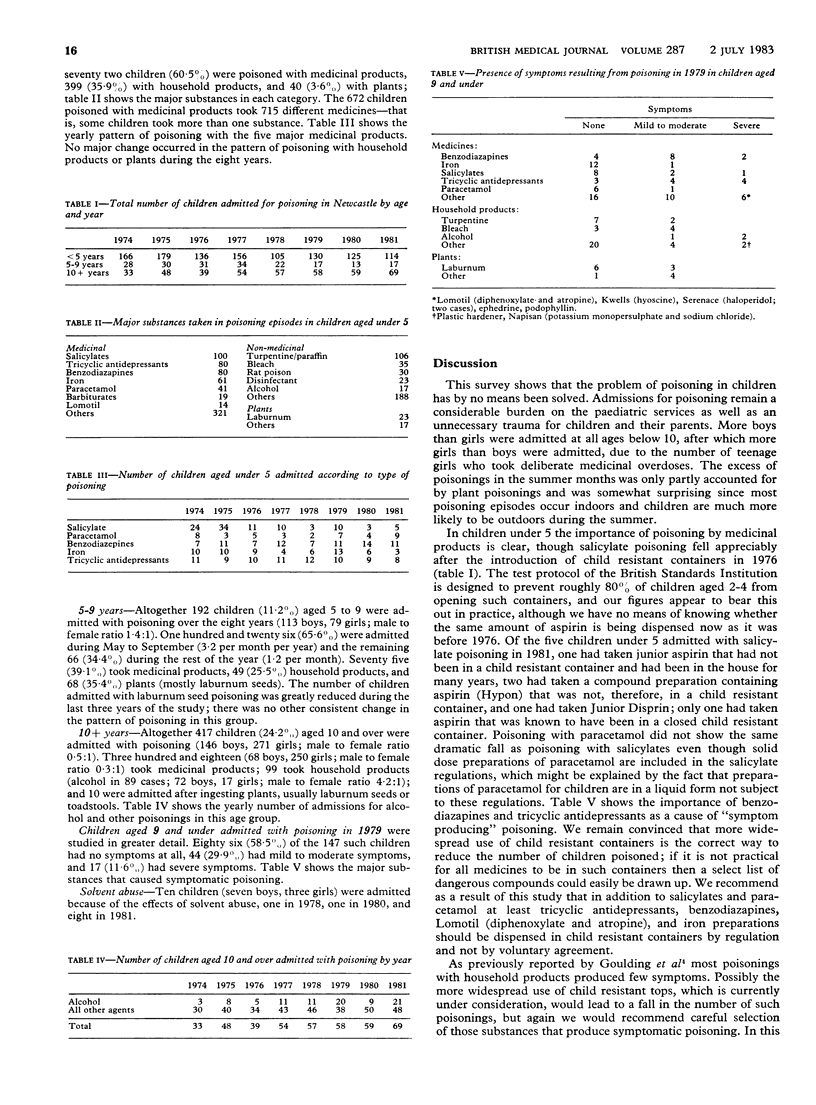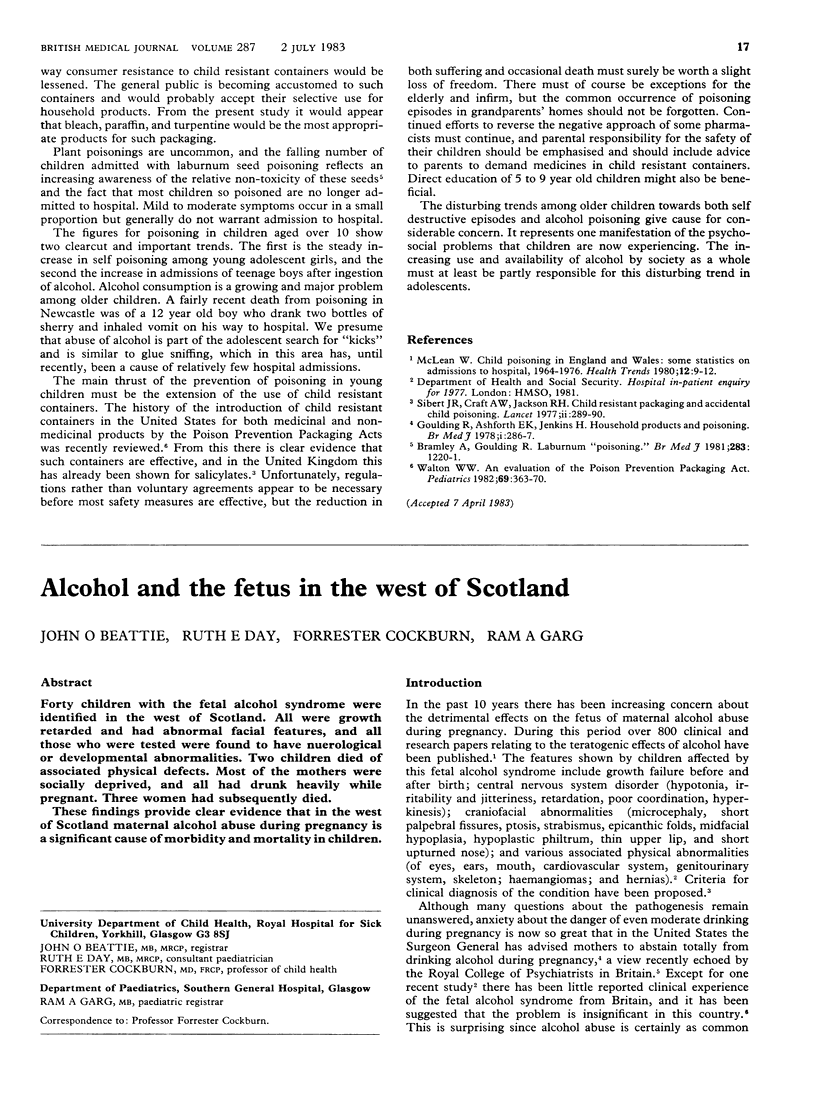Abstract
All children aged under 15 years admitted to hospital in Newcastle upon Tyne between 1974 and 1981 with a diagnosis of poisoning were studied. After the introduction in 1976 of child resistant containers for salicylates and paracetamol, salicylate poisonings fell dramatically. The other most important medicines to cause poisoning in young children were tricyclic antidepressants, benzodiazapines, Lomotil (diphenoxylate and atropine), and iron preparations; these should also be packaged in child resistant containers by regulation. Few children had symptoms after poisoning with household products, but bleach, turpentine, and paraffin might also be packaged in child resistant containers. The numbers of adolescent girls admitted after deliberate self poisoning and of teenage boys admitted after ingestion of alcohol increased over the study period.
Full text
PDF


Selected References
These references are in PubMed. This may not be the complete list of references from this article.
- Bramley A., Goulding R. Laburnum "poisoning". Br Med J (Clin Res Ed) 1981 Nov 7;283(6301):1220–1221. doi: 10.1136/bmj.283.6301.1220-a. [DOI] [PMC free article] [PubMed] [Google Scholar]
- Goulding R., Ashforth G., Jenkins H. Household products and poisoning. Br Med J. 1978 Feb 4;1(6108):286–287. doi: 10.1136/bmj.1.6108.286. [DOI] [PMC free article] [PubMed] [Google Scholar]
- Sibert J. R., Craft A. W., Jackson R. H. Child-resistant packaging and accidental child poisoning. Lancet. 1977 Aug 6;2(8032):289–290. doi: 10.1016/s0140-6736(77)90966-7. [DOI] [PubMed] [Google Scholar]
- Walton W. W. An evaluation of the Poison Prevention Packaging Act. Pediatrics. 1982 Mar;69(3):363–370. [PubMed] [Google Scholar]


